At this point in our survey of the magical history of America, we’ve reached the period that can fairly be called the golden age of American occultism. It’s a little difficult to date the leading edge of that period, but 1890 will do as well as any. The end of the golden age is a good deal easier to place. It happened in 1929, and yes, the stock market crash of that year was one of the reasons why. The other—well, we’ll get to that in a future post.
Several factors flowed together to make that golden age possible. Most obviously, the runaway success of the Theosophical Society in the United States and elsewhere made it clear to a great many people that there was a huge and mostly untapped market for occultism in America, and that market wasn’t even remotely satisfied with the traditions of folk magic and the volumes of divinatory party games for young ladies that made up most of what was available in American popular culture before 1890. The law of supply and demand accordingly saw to it that plenty of other orders, societies, and schools popped up to provide occult teachings for those who weren’t satisfied with what the Theosophists had to offer.
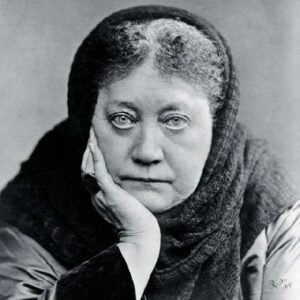
As the Golden Age dawned, furthermore, there were plenty of people who weren’t satisfied with Theosophy. As the Theosophical Society expanded, Blavatsky and her successors made the same mistake that Bill Gates made more recently in a different field. Instead of competing with her rivals by providing better goods and services, she tried to enforce a monopoly over the industry and force consumers to accept whatever she chose to offer, because it was the ony game in town. That never works for long. For the same reason that you probably don’t use Internet Explorer any more, a great many Americans interested in occultism bailed out on Theosophy as soon as a more appealing alternative came into sight. That made life easy for anybody who could come up with a more appealing alternative—and plenty of people accordingly did.
The other factor that helped pup an abundance of new occult schools as the golden age dawned was the revolution in transport that flung railways across the North American continent in the third quarter of the nineteenth century. It took a little while for the post office to catch up with that revolution, but well before 1890 any mail that went outside a single urban area went by train. Postal cars—in effect, post offices on wheels, where mail was sorted and bagged for its destinations by postal clerks while en route—took over much of the mail, cutting delivery times to a fraction of what they had been. All of a sudden letters and packages could be shipped promptly and safely from one end of the United States to the other in a matter of a few days. That in turn led to the rise of the correspondence course industry.
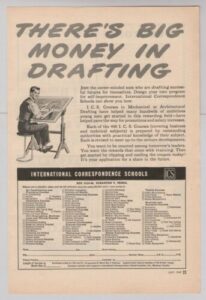
Turn to the back pages of any magazine published between 1890 and the rise of television, accordingly, and you can count on finding scores of advertisements for correspondence courses on any subject you care to think of. Interested in learning accounting? Here you go. Want to play the piano? Step right up. How about improving your memory? We’ve got you covered. What about the secrets of the ages, passed down by a long line of occult masters from Egypt or Atlantis or what have you? Send a self-addressed envelope and $1.00 to Scribe XYZ for an application for our correspondence course. What this meant is that any enterprising occult teacher could have a nationwide audience for his or her teaching for the cost of a classified ad. Plenty of enterprising occult teachers did exactly this—and countless thousands of aspiring students of occultism duly sent in their self-addressed envelopes and dollar bills, applied for membership, and took in weekly or monthly lessons thereafter.
There was inevitably a great deal of competition in the field. The intensity of the competition varied from one branch of occultism to another, largely depending on who claimed which ancient occult heritage and how willing they were to launch a public squabble over it. The fiercest and most colorful of all the resulting struggles centered around the legacy of the old Rosicrucians, and the conflicts, in a wry reference to the English civil wars of the fifteenth century, have been called the Wars of the Roses.
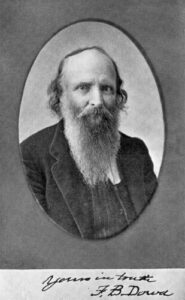
Let’s start by setting out the contending forces. The oldest of the lot, in corner #1, is the Fraternitas Rosae Crucis (“Fraternity of the Rose Cross” in Latin) or F.R.C., which we last saw as one of the creations of that force of nature, Paschal Beverly Randolph. He originally founded it in 1858, but his “cross-grained” nature kept it from becoming much more than a scattered network of students until after his death in 1875, when Randolph’s student Freeman B. Dowd reorganized it, becoming its second Supreme Grand Master. In 1907 Edward H. Brown succeeded him, and in 1922 the mantle passed to an osteopathic doctor named Reuben Swinburne Clymer, who had joined the order in 1897 and had been helping to run it since 1905; he remained in charge until his death in 1966. When he became its head, its headquarters moved to Clymer’s home town, Quakertown, Pennsylvania, where it remains today.
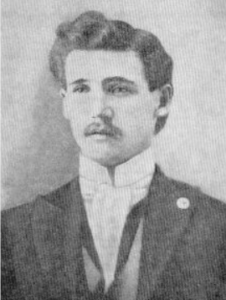
Clymer was an American occultist of a classic type, just as deep into alternative heatlh care and diet as he was into spiritual practice. An opponent of vaccination and chemical medicine, he favored herbal healing and argued that red meat is toxic but fish, dairy foods, and eggs are healthy. In the occult end of his work, he devoted much of his life to synthesizing and developing P.B. Randolph’s teachings, and developing a series of orders and churches to embody the different aspects of the teachings, as well as writing two lengthy correspondence courses that are still available. He believed that as head of the F.R.C. he was the legitimate head of the Rosicrucian tradition in America, and he was not the kind of person who could handle having his prerogatives challenged.
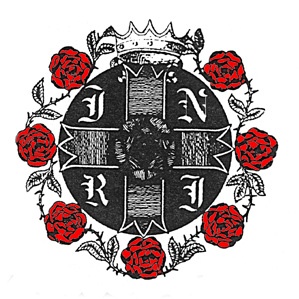
In corner #2 is the Societas Rosicruciana in America (SRIA), which also connects to a current we’ve already traced. Sylvester Clark Gould, an American Freemason and student of occultism in Manchester, New Hampshire, was a member of the Hermetic Brotherhood of Luxor in its brief heyday, and also belonged to a short-lived American branch of the Societas Rosicruciana in Anglia, the premier Masonic Rosicrucian order. (Another American branch was founded later and still exists today.) When the H.B. of L. collapsed, Gould made contact with a Rosicrucian order in Hungary, received the necessary initiations to start a Rosicrucian organization of his own, launched a periodical named The Rosicrucian Brotherhood, and passed on his initiations to several other Masons with occult interests . Before his intended organization could get started, however, Gould died.
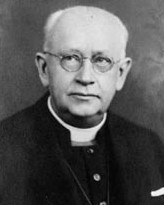
George Winslow Plummer, who had received the initiations from Gould, went ahead with the project and founded the SRIA in 1909. From then until his death in 1944 he was one of the fixtures of the occult scene in New York City, a frequent lecturer and the author of books on New Thought and Rosicrucian spirituality. The Metropolitan College of the SRIA, the New York lodge of the society, taught astrology, meditation, and mystical Christianity to local students, while the SRIA correspondence course passed on his occult philosophy to students around the country. A series of other Colleges sprang up in towns and cities elsewhere in the United States and also in Freetown, Liberia. In addition, Plummer arranged to be ordained as a priest and then consecrated as a bishop in one of the independent Orthodox Christian churches.
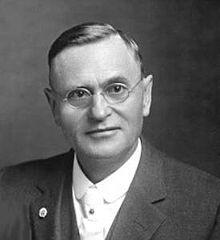
Plummer’s Rosicrucian teachings had a lot of shared ground with those of the next order on the list, the Rosicrucian Fellowship over in corner #3, which was also founded in 1909. Its founder was Danish occultist Carl von Grasshof, who moved to the United States in 1903 and later changed his name to Max Heindel. Heindel was an astrologer and Theosophist who studied with California teacher Katherine Tingley and iconic Austrian occultist Rudolf Steiner, and set out to teach a Western occult spirituality that was accessible to the general public. His organization was originally founded in Seattle, but he moved to Oceanside, California, where the Rosicrucian Fellowship is headquartered today.

The Rosicrucian Fellowship teaches mystical Christianity and astrology, and its members are encouraged to adopt celibacy and a vegetarian diet and to give up alcohol, tobacco and drugs. Heindel wrote a good-sized shelf of books on occult and astrological topics, but the one that mattered most was The Rosicrucian Cosmo-Conception, which has since become one of the classics of American occultism. He also penned correspondence courses which are made available to students on a by-donation basis. He died in 1919, but his organization continued to thrive thereafter under the capable guidance of his widow Augusta Heindel.
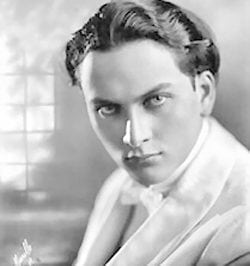
Heindel’s organization had an outsized impact on the world of occultism through three indirect means. The first was a young Canadian man named Manly Palmer Hall, who came to California in 1919 and stayed with the Heindels for a short time before Max died. Hall went on to become far and away the most influential occultist of mid-twentieth century America, a titanic figure with an outsized influence on his society and era, and if you know his work you can see the themes he learned from Max Heindel’s teachings all through it.
The second was the aforementioned George Winslow Plummer. Unusually for an occultist of his time, Plummer didn’t think he was the only valid Rosicrucian in the market; he considered Heindel and Steiner as reputable Rosicrucian authorities and cited them by name and page number in his own works. Since his SRIA didn’t require vegetarianism and celibacy, it drew a great many students who were interested in Rosicrucian occultism but weren’t interested in these two strictures, and those students got a fair amount of secondhand Heindel when they didn’t just plop for a copy of The Rosicrucian Cosmo-Conception as additional reading for their studies.
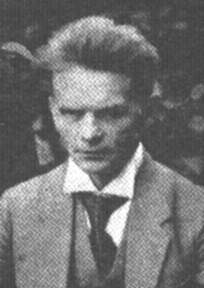
The third indirect route was less honest and a good deal funnier. A German Theosophist named Hugo Vollrath was the channel in question. He ran the Theosophical Publishing House in Leipzig, Germany until it was shut down on Hitler’s orders. A classic occult eccentric, he liked to wear a fez because, he said, it kept his aura in place. Like a great many occultists of his time, he founded a correspondence school; like the groups we’ve discussed already, his borrowed the Rosicrucian name and label. Instead of going to the trouble of coming up with his own teachings, he translated passages from Max Heindel’s writings and sent them out as “Master Letters” under the nom de adeptship of Walter Heilmann. The “Master Letters” spread far and wide, and quite a few people who later claimed other origins for their teachings got their introduction to Rosicrucian occultism from them.
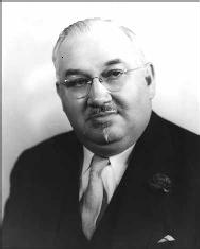
Then there’s the final contender in the Wars of the Roses, the Ancient Mystical Order Rosae Crucis (AMORC) in corner #4. AMORC was the creation of Harvey Spencer Lewis, a New York commercial artist with a longtime interest in occultism and parapsychology. In later years he insisted that he received a charter from a Rosicrucian order in France in 1909. In terms of the kind of history that can actually be documented, he applied for membership in the SRIA in 1914, and his application was rejected. The next year he contacted Swiss occultist Theodor Reuss, the head of the Ordo Templi Orientis—another offshoot of the Hermetic Brotherhood of Luxor—and got a charter from him.
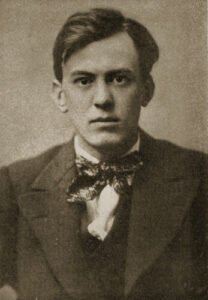
Lewis may not have realized this at the time, but he was stumbling into a hornet’s nest of occult politics. Some years previously Reuss had given a charter to English occultist Aleister Crowley, only to discover that Crowley assumed that the charter gave him the right to run the entire order according to his own eccentric lights. Reuss’ contacts with Lewis were meant to help take the OTO back from Crowley and his Canadian protegé Charles Stansfield Jones. Crowley proceeded to make contact with Lewis and made various offers, which Lewis had the good sense to turn down. Reuss, for his part, conferred a great many titles and ranks on Lewis, but his demands for money were unceasing. Finally Lewis had had enough, and in 1925 he founded his own organization, AMORC. Originally based in Florida, it relocated to San José, California in 1927.

As a commercial artist, Lewis had done a great deal of work in the advertising industry, and he understood marketing to a degree that few other occultists of his time could match. Once the AMORC correspondence course got under way, Lewis flooded popular magazines with full page advertisements, and for a while had his own radio station to help proclaim the Rosicrucian gospel across the airwaves. That inevitably brought him to the attention of Clymer, who responded with fury to Lewis’ claims, and the war was on.
The first round was carried out by proxies. Two disaffected members of AMORC, George Smith and Alfred Saunders, had launched their own campaigns of negative publicity against Lewis and his organization, and Clymer leapt on their bandwagon and gave as much publicity as he could to their charges. Lewis responded by publishing a book, Audi Alterem Partem (“hear the other side” in Latin—Lewis had a habit of using Latin for his official pronouncements) which purported to be a response to Clymer’s accusations by a committee called to investigate them; the committee, of course, found them groundless. Lewis’ book also called Clymer a bogus occultist whose fondness for grandiose titles had led him into the fake-Rosicrucian business.
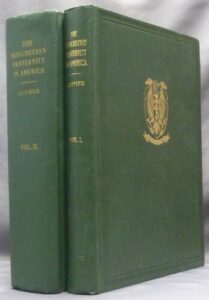
Clymer went ballistic. He had previously published volume 1 of The Rosicrucian Fraternity in America, a history of American Rosicrucianism which of course stressed the importance of his order. The second volume, all 959 pages of it, was an all-out assault on Lewis and AMORC. Lewis responded in kind, though not at the same length, with an assortment of published jabs at Clymer. It’s entertaining to note that both men accused the other of teaching sex magic, and both tried to associate the other with Aleister Crowley, whose antics had given the scandal sheets of their time an ample supply of lurid stories in the decades just past.
As part of his counterattack, Lewis set out to give his order a less controversial connection with European Rosicrucian orders. In 1934 he and a Belgian occult promoter named Jean Malinger created an organization called the Federatio Universalis Dirigens Ordines Societatesque Initiationis (Universal Directing Federation of Initiatory Orders and Societies), mercifully shortened to FUDOSI in common parlance. Not to be outdone, Clymer launched the Federation Universelle des Ordres, Sociétés et Fraternités de Initiés (Universal Federation of Orders, Societies, and Fraternities of Initiates) or FUDOFSI, and published another volume titled The Book of Rosicruciae in which he described his travels around the world and his meetings with the Rosicrucian societies that had honored him as the one true representative of the Rose Cross in North America.
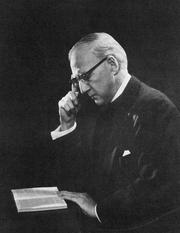
The back and forth between the two men continued until Lewis’ death in 1939. Clymer continued taking pot shots at AMORC after Lewis’ son Ralph took over the organization, but the old fire was gone, and the FRC had other threats to cope with once the federal government began its crackdown on alternative health care after the Second World War. For its part, AMORC under Ralph Lewis and his successors embraced the wiser strategy of ignoring its critics, and went on to have a substantial influence on American occultism and society in general. Did you know, for example, that Walt Disney was a member of AMORC?

Interestingly, neither of the rival orders directed much rhetorical ammunition at the other two Rosicrucian orders we’ve mentioned. The Lewises serenely ignored everyone but Clymer, who was too good at jabbing it in painful places to get the same treatment, while Clymer made dismissive comments about the SRIA and Rosicrucian Fellowship from time to time but didn’t follow up on them. For their part, Plummer and Augusta Heindel acted as though the whole controversy was someone else’s problem, and it accordingly was.
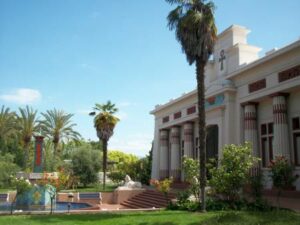
The rivalry we have chronicled had its positive dimensions, to be sure. The two orders built competing parks on opposite sides of the continent—the grounds of Beverly Hall in Quakertown PA, and Rosicrucian Park in San Jose CA. Both are full of ornate architecture and facilities for their respective organizations, and both became sites of pilgrimage for their respective students. Both of them are worth a visit if you happen to be in the area. So, for that matter, is Mount Ecclesia in Oceanside, California, the headquarters of the Rosicrucian Fellowship, another park with ornate buildings. Few other organizations active in the golden age of American occultism managed that kind of monument to themselves. I’m sorry to say that our fourth competitor, the SRIA, never got around to building a spacious headquarters in a park, and currently operates out of a private home in a Florida suburb. Many other once-mighty occult orders have been reduced to similar straits if they have managed to survive at all.

All four of the Rosicrucian orders discussed here, for that matter, are still in existence and still offer correspondence courses to aspirants. The current AMORC course, according to members I know, has been completely rewritten several times since Harvey Spencer Lewis’ day, while the other three still pass on the teachings of Clymer, Plummer, and Heindel respectively in unabridged form. Readers interested in various ends of alternative culture may be interested to know that the FRC still adamantly opposes vaccination and promotes natural healing, and the SRIA and the Rosicrucian Fellowship continue to teach their own somewhat quirky forms of mystical Christianity to anyone who is willing to learn.
All four orders also have a significant presence online. You’ll find the FRC at soul.org, the SRIA at sria.org, the Rosicrucian Fellowship at rosicrucianfellowship.org, and AMORC at amorc.org. The era of open hostility among the orders has slipped far into the past, though the FRC still aims the occasional pot shot at AMORC for old times’ sake, and the SRIA quietly keeps Harvey Spencer Lewis’ 1914 application up on their website. It’s a genteel echo of a far more colorful age.
On the subject of alternative health practices, I’m going to a chiropractor for the first time soon. I’ve been thinking a lot about alchemy and how many things are similar to the alchemical process. Chiropractic doesn’t seem like that though (maybe a few elements if I stretch the definition). There’s a shove, a crunch, and everyhing is back where it belongs. It looks so satisfying – https://www.youtube.com/c/MondragonChiropracticDickinson/videos. In occultism is there a concept or process that’s equivalent to that kind of realigning?
They really did like the triple names back in the day, eh?
Fun read.
Axé
Yorkshire, not to my knowledge — though chiropractic is dismissed as crackpot pseudoscience by the usual suspects. (Ergo, it probably works better than corporate mainstream health care.)
Fra’ Lupo, yep. (Says a writer who goes by John Michael Greer…)
My experience of Rosicrucianism has been very much of the self-help variety. Can’t remember something? Use Rosicrucian techniques. Got a problem that just cycles through your mind, torturing you so you can’t cope? Rosicrucian techniques. Not what I’d count as magic, but an alternative to those answers provided by regular Christianity which tends to point to the Old Testament and ask why we’re upset or point to the New Testament and say it’s all taken care of because of Jesus Christ. Rosicrucianism deals with issues of gender, personality, self-acceptance. It seemed a little bit light on the spell-casting. Nice Egyptian theme with no intention of worshipping Egyptian gods.
Note that with the correspondence courses there are no holy sites designated. Personally I find that a shame. Spirituality-as-tourism appeals to me. Perhaps the correspondence course thing is why many modern occultists (using the term loosely) who ought to be finding sacred spaces outdoors…flinch away from anything that might involve trespassing on private property. Wicca anywhere, but not druidism. Paganism as long as it’s in someone’s backyard and no particular location is called more sacred than any other. NO ORGANITE STUFF! NO LEY LINES!
It’s a funny way to be egalitarian.
Of course, no sacred springs, either.
I love reading about ley line stuff on the internet. Really wonder what they’d say about my area on the east coast of the USA since so many of them are in the midwestern deserts. Other than Washington, DC, which is either a ley line hub or sort of an anti-matter one, I haven’t stood where anyone says there is a ley line, that I know of. I think it would be fun to try.
Loved today outing! Ah yes, correspondence courses. My Dad did several as a boy including photography and trying to learn Spanish. Both came out about as well as you’d expect, based on his descriptions. He had told me there were mail-order courses for E V E R Y T H I N G back in the ’40s and ’50s.
Did you know that there is a Rosicrucian museum in San Jose, CA https://egyptianmuseum.org/ that has a superb collection of Egyptian artifacts? Who knew?
My favorite observation on Rosicrucians in pop culture was a line in the film Annie Hall, where Woody Allen quips that he “can’t trust any religion that advertises in the back of Popular Mechanics.”
It’d be fun to play an RPG ‘bookhound’ campaign (https://site.pelgranepress.com/index.php/21387/ and https://site.pelgranepress.com/index.php/exploring-bookhounds-of-eversink/) where instead of chasing after ancient tomes you were trying to track down rare copies of the most effective correspondence courses. 🙂
What are the most suprising / unusual / funny subjects you’ve ever seen correspondence courses about?
Hmm, the underlying form of that SRIA emblem looks a lot like the DMH Wheel of Life (the topmost station, Alban Arthuan, is symbolized by a crown).
Seems like a great time to have been alive.
I remember the Rosicrucian ads. Seemed like they were everywhere – Popular Science – SciFi mags – Organic Gardening – newspaper Mags. Not sure about QST :-).
@Yorkshire
I’ve been going to a Chiropractor monthly for at least 15 years. Took about 5 years to get rid of the leg pains and keep them from coming back. Always feels good when he is done. Fairly inexpensive also.
John – Coop Janitor
FYI, Internet Explorer/Exploiter was officially retired earlier this summer due to falling use and it’s architectural security gaping holes. I almost pity the faithful who made web apps that only worked on it.
I now recall an excerpt from “The Secret Doctrine of the Rosicrucians” book, which goes as follows: “Before acknowledging the futility of the quest, however, he usually investigates one or more so-called ‘orders’ having as a part of their title the word ‘Rosicrucian,’ only to find himself invited to join such ‘order’ upon the payment of a fee or fees ranging from a small amount in some cases to quite large amounts in others, each ‘order’ claiming to be the ‘only original order,’ and asserting that all the others are base imitators.”
I wonder which of those orders Magus Incognito (ahem, W. W. Atkinson :D) was targeting in that excerpt, and/or if he took any particular side in the feud between these groups.
It’s all very People’s Front of Judea. Thanks JMG
https://www.youtube.com/watch?v=WboggjN_G-4
This post made me laugh a couple times. Not sure if I would call it a war. Seems like an occult version of school yard drama! I was happy to see Plummer (who I think the Star’s Reach character was named after?) stayed out of it.
JMG would you be open to writing a similar post about the history of alternative health care in the USA and its’ suppression?
@Yorkshire, although I have never gone, some of my loved ones have go to chiropractors and had nothing but good experiences. However, chiropractic does get interesting conceptually…Principle #1 of chiropractic is “A Universal Intelligence is in all matter and continually gives to it all its properties and actions, thus maintaining it in existence…”
https://ifcochiro.org/33-principles-of-chiropractic/
Axé
I used to pass the headquarters in Oceanside when off duty from Mainside, Camp Pendelton going into town, IIRC. It had a kind of magnetic pull, but no one knew anything about it. I never looked into it, instead spent my money and off duty time on a 1974 Norton 850 motorcycle, riding up to Mt. Palomar and then back to a diner in Carlsbad that served Chile Relleno (?). I wonder what they would have thought had I rolled up on their doorstep …. No one wanted to talk to jarheads back in 1975, pretty much the same even today, in academia.
Once again you’ve taken a subject I have little interest in and made it a fascinating read. I remember the ads in the back of comic books and magazines – especially La Salle Extension University.
Ye gods…sounds like slightly more organized and better penned versions of the esoteric scene on FacePlant and other platforms. It’s sad that we haven’t changed that much, and have become far less eloquent in the process.
I noticed that the 20th century occultists tended to flock to California. Was it just the wealth of the state or something else that attracted them?
Have you come across ‘The Key to the Universe’ by Harriette and Homer Curtiss? They seemed to have run an outfit called ‘The Order of Christian Mystics’ which would seem to have been publishing stuff very similar to the 4 Rosicrucian Organizations you mentioned. I pulled it off my bookshelf again as it tallies so well with your series on Levi’s ‘Dogma and Ritual of High Magic’ and I read that Manly P Hall’s tarot cards were influenced by it.
Hello JMG,
Have you taken any of the courses? If so, what are your thoughts?
Where does the image of what a magic school or HQ is supposed to look like come from? It seems to be deeply embedded in the culture.
Womensatlasrc, which Rosicrucian order do you have experience with? I know some that include a lot of magic.
KevPilot, that Egyptian Museum is part of the AMORC complex there. AMORC claims, or at least used to claim, an Egyptian origin.
Yorkshire, that could indeed be fun. As for exotic correspondence courses, none really come to mind — I’ve only ever gone chasing after occult courses, and those by and large cover the same things.
Jbucks, funny about that. Would you be surprised to learn that I’m a member of the SRIA?
Janitor, now you have me wanting to go dig through back issues of QST and see if any occult schools put ads there!
Andy, I hadn’t heard. How art the mighty fallen…
Minervaphilos, as far as I know he didn’t take sides. He had his own correspondence courses!
Bridge, it is indeed. I’ve seen identical dynamics playing out in the Druid community.
Youngelephant, there are several people behind Plummer in Star’s Reach…
Mary, that wouldn’t be a post, it would be a book. It’s a huge subject. I dealt with it to some extent in a series of posts on radionics on my Dreamwidth journal a few months back.
Mark, they’d have welcomed you. Occultists aren’t academics, and the Rosicrucian Fellowship is rather conservative in its own quirky way.
Christopher, thank you!
Catriona, not so much less eloquent. Some of the denunciations flung from side to side in the Wars of the Roses were no better than current Faceplant screeching. As for “we haven’t changed that much,” er, why should we? We’re the same species, after all, and progress is a myth, not a reality.
Ecosophian, there’s always someplace where popular American occultists end up. In the early19th century it was Boston and environs, in the late 19th and very early 20th century it was the greater Chicago area, in the first half of the 20th century it was greater Los Angeles, and in the second half it wa the greater San Francisco area. As far as I know the next one hasn’t surfaced yet. The requirements are cheap rents and a large number of interested people.
Mr. O, I have indeed; it’s readily available in PDF these days. The Curtisses were also players in the mystic correspondence course market.
Dean, I’m partway through the SRIA course; it’s dry, and very Christian (in a quirky way), but interesting. I haven’t taken any of the others.
Yorkshire, good question! That would be worth exploring.
The time period you reference was also the heyday of the American KKK, a brief time period when it escaped the fringe to become a major political force. You have referenced the occult dimensions of Nazi Germany before, and I’m curious if the KKK was also wrapped up in occultism, if it was reactionary against it, or if it was mostly unrelated.
@JMG AMORC.
“However, no rite or ceremony, no matter what its form or how it is conducted, is a true initiation if it does not do the following:
cause you to engage in introspection, that is, to turn your consciousness within, to look upon yourself;
engender within you a feeling of aspiration and idealism; and
exact from you a sacred obligation or promise which you make to yourself that you will try to fulfill your aspirations.”
It’s all like that. No banishing, no circles, not even some weird theory on how Jesus is still alive in each of us. What is the gist of the secret knowledge they’re supposed to have? I see no influence of Will on Reality here, only a bit of self-help and personality tinkering. https://www.rosicrucian.org/initiation-and-community
Not really the subject I wanted to hear about, to be honest, out of all the ones I touched on in the original comment. “Which Rosicrucian group is it?” Bah! And it was a perfect lead-in to mention geomancy again. Obviously, I still haven’t bought that book.
Yorkshire-
I have had liberating experiences with chiropractors, especially the day after treatment, but also have a family member who was injured by one due to an undiagnosed disk disease. How much of that was psychosomatic I will never know, because said family member is also in the habit of drinking deeply from the propaganda tap.
While not Western-based, Lomilomi is an amazing practice throughout the Pacific that treats health issues on several levels. The real stuff is of course far different from the tourist spa version. Hawaii’s practitioners managed to escape religious persecution by establishing underground schools long before the medical tyranny of the 1940s, and have since carved out a unique exception in the law. Thank goodness, because it saved me an incredible amount of unnecessary suffering, copays, and lost wages.
The modern version incorporates a lot of Eastern medicine, and experiencing the powerful results of that amalgamation was no small part of my inspiration to start studying Western occult traditions. Many people smarter than myself have noticed that when you follow different belief systems back to their roots the similarities tend to pile up. From what I have witnessed, even entirely lost traditions can fill in the missing pieces with compatible chunks from other cultures.
So, assuming one does not already exist, if someone wants to get started on an alchemical healing practice based on the concept of realignment there is plenty of raw material to sort through. These processes tend to be much more involved than simply changing some names around, but seeing as how modern medicine is rapidly destroying its own credibility this could be an auspicious time to begin such an effort.
Hello JMG,
Towards the end of this essay you mention that Beverly Hall and Rosicrucian Park are worth a visit if one is in the neighborhood. As you tied Manly P. Hall into the story, might I add the Philosophical Research Society in Los Angeles to the list as well. I’ve been a few times over the past several years, primarily when the auditorium has been opened for lectures by Dr. Stephan Hoeller. The grounds and library are a special place for sure, not to be missed, with art and relics all around. Apparently President Reagan, and others in the who’s who of Hollywood, used to stop by from time to time.
I was a member of AMORC for a decade, and served as Archivist and later as Master of a Pronaos. There were things that I loved, e.g. the lodge work, and things that I abhorred, e.g. the Theosophical influences. AMORC is the modern whipping boy, especially at the hands of European Rosicrucian groups. “Who do those pesky Americans think they are?!” It shall be interesting to see where things go in the future.
Hi Yorkshire,
Long before PCs were ever thought of, my brother took a TV/radio repair correspondence course; no one in the family ever had to call the repairman again. Continuing to follow the electronics field on his own, he can now repair and build computers.
I’ve never taken a correspondence course but have the Living Language Basic/Intermediate and Advanced Spanish courses, which I review every so often. One’s so old it uses cassettes, not CDs. The recorded material is great. I don’t recommend the B/I manual, it’s loaded with typos. I had high school Spanish, so it didn’t faze me, but if all you know about the language is overhearing the cleaning lady on the phone, the typos would be confusing.
Mark, it was unrelated. I’ve read the ritual — you can find it if you know where to look — and it’s a generic fraternal lodge ritual, reworked lightly to fit a political and racial agenda.
Womensatlasrc, that sounds like AMORC. Other Rosicrucian orders are considerably more esoteric in their focus.
Phinnie, trust me, I’ll be talking about that when I get to the post on Hall. Yes, he gets a post all to himself.
Dana, that’s worth knowing — but then I don’t find Theosophical influences abhorrent.
Hi John Michael,
Thanks for the fascinating history, and I must add that my favourite option to the unfolding drama was: “acted as though the whole controversy was someone else’s problem, and it accordingly was.” Yes, let them promote interest in the cause, and yet don’t let them draw down upon your energies.
Incidentally, Manly’s eyes are a frightening viewport into his inner world, and I’ve never seen a photo of Aleister before, but he looks like what we’d describe down here as a ‘stunned mullet’. 🙂
I’m assuming that your reference to monopoly seeking was not just intended to refer to boss dork number one, but also the others of his ilk? The problem with being successful in that endeavour is that they ultimately fail because of the success. That fight certainly seems to be taking shape today, with the predictable outcomes. In a world of declining energy and resources, any gain comes at someone else’s expense – how could it be otherwise?
Cheers
Chris
@Mark Grable # 16: A 1974 Norton 850 didn’t have a soul like a 1952 Vincent, but still…. a high school friend, subsequently quite a successful attorney, had a Norton of about that vintage. He called it a “testosterone machine.”
Do I have anything on topic for this post? I visited AMORC headquarters in San Jose once in the 1980s. My supervisor at Pacific Bell knew of Spencer Lewis. I think he was involved in AMORC. I’d been reading some Lewis Spence. We both thought that was pretty odd.
“the same mistake that Bill Gates made”
Unfortunately Microsoft doesn’t seem to recognize this as a mistake – they’re still trying to coerce people into installing and using the Edge browser. Windows 10 is chockfull of such nonsense, thus my newest computer runs Linux Mint. Give it a try folks, it’s stable and works well for any and all common tasks, including gaming on Steam if you’re into that.
>>which Rosicrucian order do you have experience with? I know some that include a lot of magic.
Which orders include a lot of magic? From poking around on their websites, I was under the impression that they were all pretty much, “dry, and very Christian (in a quirky way), but interesting.” That doesn’t exactly sound like a bad time to me, so I’ve been considering trying one out eventually (probably SRIA), but I’m more interested in ones that include more magic.
I remember the headline and subhead of the Rosicrucian ad I encountered most often in the backs of magazines: “A Split Second in Eternity” and “The Ancients Called It Cosmic Consciousness.” (In between, a stylized graphic of a man who looked like he’d just laid down for a nap on a big stone cross, with a spike of light coming out of, or perhaps zapping into, his forehead.) With that phrase one can find a examples of the ad online; it was an AMORC (self-described as “an age-old brotherhood of understanding”) ad. That example was from 1951, so they must have continued using the same ad for at least another twenty years.
Any idea what the attunement with infinite wisdom “for a flash of a second” thing is all about? It could be a metaphor for an initiatory experience, but it doesn’t really sound much like it. I’ve had some split-second spontaneous hypnagogic experiences that could be related. Or are there occult techniques involving voluntary sudden sharp blows to nerve plexuses or something like that? I hope they weren’t just playing with the technicality that any amount of time is a flash of a second compared to eternity.
Chris, Hall was closely connected to the film industry and it wasn’t until he was fairly old that you can find a photo of him that wasn’t posed and gimmicked to make him look like a Man of Mystery. As for boss dork number one, you can fill in as many numbers as you like there!
Phutatorius, funny.
Karalan, of course Microsoft doesn’t. Neither did the Theosophists until much, much later.
Rohan, none of the four that I’ve discussed in this post have much to do with ceremonial magic. I’m sorry to say that that’s all I’m in a position to mention.
Walt, since I’ve never taken their study course, I have no idea. Can any of our AMORC members clarify?
You mention the first of the Rosicrucian orders as being the FRC in 1858. However, I read somewhere that one Johan Valentin Andrea had started it in around 1617 or so, via some “anonymous” manuscripts he had written. He is identified as the founder of the Rosicrucians on Wiki-Pedia, but then I know that that source is reputed to be unreliable. You don’t mention his, so was he really involved at all?
Antoinetta III
The one thing that I miss in the magical history of America is magic. All I see is people wirh quaint interests and hobbies who also go after money, fame, social status and influence. A whole lot of politics and (show)business.. Even when they go to war against each other, for all the same mundane reasons, they don’t use fireballs, curses, no spells of any kind. Instead, their main weapon of choice is slander.
So, where’s the magic?
Apologies for being blunt and for the fireball joke.
Great article JMG!
I didn’t know Walt Disney was a Rosicrucian! But I guess I’m not surprised, with the early films being focused on folklore and actual fairy tales and such. Yet somehow, along the way, the magic kingdom lost it’s magic…
…Interesting too about Spencer Lewis and his involvement with commercial art.
& tangentially speaking of Thelema and the Thelemites (I am a fan of Charles Stanfield Jones work… The Chalice of Ecstasy and Egyptian Revival blew my mind when I read them… also being involved with some Maat orders, he was kind of a godfather….) …anyway, it got me thinking…
What about the War of the OTO’s? There would have to be a better more clever name for calling those legal battles over lineage etc. In any case, I’m not questioning the legitimacy of the claims made by the O.T.O vs what is now called the Typhonian Order or TOTO, but it does seem like this is something orders get pulled into at times or like to do.
Magicians are still human after all.
(Not a religion!)
I think I can shed some light as to why AMORC rewrote their lessons. Not to put too fine a point on it, but some of those H. Spencer Lewis books were racist. (Going by 20-30 year old memories here.) For instance, I remember stuff about how the ancient Egyptians were white (at least before black Africans invaded), and Jesus wasn’t really Jewish. Now most white-run social groups of the time (churches, fraternal orders, etc.) were racist to some degree, so none of this is terribly remarkable–in fact they deserve credit for acknowledging the problem and doing something about it. I say this as a complete outsider to any type of Rosicrucianism, the enticements of Scribe XYZ notwithstanding! (I saw those ads in “Omni.”)
Do people know about the theory that Manly P. Hall was murdered?
https://www.youtube.com/watch?v=qefbUVy8AmQ
Here’s a good book on the history of chiropractic, treating it as similar to a religious movement:
https://uncpress.org/book/9781469632797/the-religion-of-chiropractic/
(Wish somebody would write one of these for osteopathy.)
Interesting chapter in the occult history of the US, JMG. Curious how so many occultists wanted the term “Rosicrucian” tagged onto their organization’s name and then the inevitable Western bickering re: who is the TRUE Rosicrucian order. What is it about the word “Rosicrucian” which was (is?) so appealing to Western occultists? Perhaps its relative antiquity? I always found the original Rosicrucian story to be bizarre (yes, I know that it is chock-full of allegory and symbolism; it just doesn’t work for me).
The “rose” in Western occultism seems to be roughly the equivalent to the “lotus” in Hindu and Buddhist occultism. But the one major difference between the two flowers is that the rose has “thorns” and is “prickly”; while the lotus has strong water associations and is soft and placid. Could these additional (and not so pleasant) attributes of the rose somehow be influencing these conflicts? Or is it just your run-of-the-mill “occultist ego run amok” thing?
By the way, one of my grandfathers was a Rosicrucian (of which order, I have no clue, nor do I have any means to find out) and I have found a lot of overlap between their basic philosophy and my own.
And when you visit the Rosicrucian Egyptian Museum, don’t forget to cross the street and take a walk through the San Jose Rose Garden.
I found the following to be an interesting website on Rosicrucian history. It might be of interest to some readers. Pansophers.com. There is some interesting history there.
@Justin Patrick Moore #39–I was active in the OTO during the 1980s when the Grand Lodge was in Oakland, California and Hymenaeus Alpha (Grady McMurtry) was Outer Head of the Order. I received my Minerval and Man of Earth degrees with him presiding, and got as far as the Fifth Degree (“the natural stopping place for most men and women”–Aleister Crowley) before I went inactive.
During the latter part of my time as an active member, one lawsuit over which is the real OTO was in progress. I’ve forgotten the name of the respondent, but I think his headquarters was in the Caribbean. According to the information I received at the time, the argument was over lineage and the issue at stake was copyright infringement. There was an occult publishing boom going on at the time. Ownership of the copyright to Crowley’s extensive published writings was a major source of revenue for the OTO.
That case was settled in the OTO’s favor while I was an active member. From what I was told, the documentation of Grady’s charter was provided to give provenance, but a deciding factor in the judge’s decision was that the organization I belonged to could show that it had active bodies (lodges, oases, and camps) in several parts of the USA and the respondent’s organization existed mostly on paper.
Antoinetta, the first of the American Rosicrucian orders. There were European orders in that tradition long before 1858, of course.
Goran, good. You’re getting the point, which is that real magic isn’t Harry Potter special-effects schlock. It’s not unicorns gagging on rainbows or mighty spells cast by (or casting down) Blorg the Bad, Evil Lord of Evilness. Real magic exists in the same world you live in, where mass marketing and publicity campaigns are among the more effective tools for causing change in consciousness in accordance with will, and where the subtler and more transformative forms of magic are delicate things that don’t make a big splash on stage. A quaint hobby? That’s an unkind description but from some points of view, not an inaccurate one. Also, occultists are human — to borrow Nietzsche’s phrase, all too human!– and like the rest of us, they like money, fame, social status and influence. If you want something else, why, I’m sure I can find some tacky fantasy novels to recommend.
Justin, the Thelema Wars took place quite a bit later in our story. I’ll be discussing them, since Grady McMurtry is a significant figure in our tale and he had quite a bit of influence over American occultism before my somewhat arbitrary cutoff date of October 31, 1979.
Bei Dawei, since AMORC has always been good at marketing, I’m not in the least surprised that they made this kind of change. Yes, we’ll be talking about Hall’s death in due time.
Ron, the Rosicrucian label has been very popular in the occult scene generally since the mid-18th century, so plenty of people have wanted to claim exclusive ownership of it. (The same thing has been true of the Druids as well — and also of Christianity, of course.) It’s quite possible that the prickly symbolism of the rose helped feed the squabbles!
Bird, sounds like good advice. I hope it’s weathering the drought well.
Reader, it’s a very interesting website.
@ JMG (and anyone else interested in herbal healing) – A few weeks ago, I aggravated a ten-year-old boxing injury to my right wrist. This problem flared up again in 2015, and the MRI, showed that the cartilage had not healed correctly, but the doctor did not think it was bad enough for surgery.
This time around, the pain got bad enough that bumping the right side of my wrist would send pain up my arm that felt like being jabbed with a cattle prod on which the regulator had been broken. A week and a half ago, I started to wear a wrist brace on it at all times, and avoiding lifting things with my right hand when possible. That helped some, but it was still bothering me. While my parents were over at our house, they asked about the comfrey I companion plant with the trees in my yard. I mentioned that I read that comfrey can be used as a poultice to help healing of broken bones. One of my parents, Boomers that they are, said, “why don’t you slap some of that on your wrist?”
I’m not sure if they were offering genuine advice, but I looked it up, and yes, many people recommend a comfrey poultice for just about any traumatic injury. So, I tried it. I’ve slept with a comfrey poultice on my afflicted wrist for a week. While it is not back to full strength, the pain is almost entirely gone away, and it feels much more stable than a week ago. No more not-correctly-healed-cartilage-and-ligaments-that-can’t-hold-the-wrist-bones-in-place popping sensations for this guy!
(For those keeping track at home, don’t skimp on buying good boxing gloves, kids.)
While I won’t fully attribute the recovery to the comfrey alone, it sure seams to have helped a lot. I’m going to keep up the nightly poultice treatment for another week, then re-evaluate. This is the first time I’ve tried an herbal home remedy, and so far, it has been a real success.
John, I must apologize, as the word ‘abhorred’ came out far more abrasive than intended. I should have merely said ‘disliked.’ AMORC has some holdovers from Blavatsky that would be more at home in New Age groups. Otherwise it is a fine organization with a beautiful egregore. It has its flaws like all its peers.
Would you recommend the FRC or SRIA, for those looking to expand their Rosicrucian studies?
Ron–re lotus vs. Rose. The rose is beauty found in the midst of brambles, one must endure or risk pain to seize the beauty–but part of the deep symbolism of the lotus is that the lovely bloom rises out of the mud and slime, so it can symbolize the ascent of the soul from the material to the sublime.
The San Jose Rosicrucian park also has a reproduction of the Chartres maze. It is outside and the paths are wide enough for wheel chairs to negotiate–a nice touch I thought. The last time I was there, several years ago, they had an exhibit of alchemical art. Very interesting.
Walt, if you’re familiar with the idea that an individual human consciousness is connected to a vaster, in AMORC parlance cosmic consciousness, then you can imagine there would be various techniques for making that connection more immediate (pun intended). To the degree that AMORC did inherit techniques from the medieval mystics, this is the kind of place you’d expect to find them. The discussions of the difference between inspiration and illumination are some of the more interesting subjects I’ve encountered in that group, and I’d guess that ad refers to the latter. Mind you, as has been mentioned elsewhere, the courses I took are probably quite different from the ones advertised there.
Hi John Michael,
Thanks for the explanation regarding Mr Manly – it makes sense. Eyes and how they are used by a person and can often reveal a lot about a persons inner workings.
I assume that the ongoing saga’s in the neopagan movement are clearly nothing new! 🙂 What did you say about those who fail to learn from history go on to repeat it? Maybe there is a bit of that going on in society as well?
Cheers
Chris
@Justin “Yet somehow, along the way, the magic kingdom lost it’s magic…”
The only media I still watch is kid’s movies these days, with the kids on movie night; and they probably are 1/3 Disney (Dreamworks and Warner Bros equally beloved). Do you have a sense when they lost the magic?
I’ve been trying to see the pattern, see what they predict, on what time scale. I would have said their early studio works were their worst in terms of retelling a story to remove the point.
We watched the updated CGI Lion King last weekend, and Mary Poppins.
The Lion King had been updated very slightly, in a way that I found very interesting, given the updates seemed to change the message (I also appreciate the updated voice actors – Beyoncé and Donald Glover, known to pop culture initiates as Queen Bay and Childish Gambino, respectively 😉). I loved the CGI updated Jungle Book we watched a few months ago, it was like the books.
But Mary Poppins knocked my socks off, I couldn’t believe how sly it was, and looking at historical reviews… No one noticed! Maybe they didn’t even notice when they made it. It was made during Disney’s lifetime, and was his “crowning jewel” live action. The kids were entranced. Today I think all their live action is garbage.
And when we watched Aladdin I went “oof, no wonder Robin Williams killed himself.” Which seems an odd reaction, but it’s what it was. The acquisition of Pixar seems to have turned things around.
Justin Patrick Moore: wait, what? There are Maat orders? I studied under Nema a lifetime ago.
With this bunch, Mount Ecclesia should have its name changed to Mount Eccentrica!
I like these guys (well, except for Crowley). They exemplify that glorious American eccentricity that results in things like superballs and Carhenge, American eccentricity reaches out to everyone, as opposed to the more insular eccentricity of the British upper class. American eccentricity makes the world a more interesting place.
Speaking of expectations, fireballs, and the nature of magic…
I was doing some journaling not too long ago, reflecting on these beginnings of magical training I’ve obtained these last few years, and asked myself: if magic is the art and science of producing changes in consciousness in accordance with will, how do I best apply these tools to my life?
The immediate answer was another question: well, what do you want to do? Having a set of tools is one thing; what one does with those tools, however, depends very much on what one’s objective is.
What I found to be interesting—if troubling—was that as I tried to nail down what my goals might be, they kept proving to be something else, like opening a box to find another box. The things that I’d have seen as “natural” and “obvious “ answers not that many years ago—power, achievement, status, wealth—reveal themselves to be hollow proxies for something else. The things that are important in the world’s eyes aren’t the important things. (The Tao that can be named the Tao is not the true Tao.)
So I sit here, following through this history of American magic (and working my way through some of these key texts after my own plodding fashion), and sense a quiet undercurrent that I can’t quite make out yet, but that I feel holds my answer, if only I could hear the whispered message properly. What I do know, though do not fully understand, is that the realities here are something vastly different than what I expected, even if I can’t yet perceive what they are.
@Greer #48 You wrote, “mass marketing and publicity campaigns are among the more effective tools for causing change in consciousness in accordance with will.” That’s exactly what I thought when I first read your definition of magic, i.e., that any of the creative arts (fiction and nonfiction writing, theater and other performance art, painting and other visual arts, etc.) can all be used in magical ways, both for good and bad.
Ben, glad to hear it. I know other people who have had excellent results with comfrey and other herbal medicines.
Dana, I would recommend either or both. I haven’t taken the FRC course — one study program at a time! — but I’ve talked shop with a senior member of the order and I have every reason to think that the courses are solid stuff. The SRIA course is also very good, though you’ll want to supplement it with Plummer’s books; it’ll be a few years, but the current head of the order and I are currently revising his main work, Rosicrucian Fundamentals, which set out to integrate Rosicrucian spirituality with modern science and did a fine job with modern science as it existed in 1920. It needs some updating on the scientific side!
Chris, Karl Marx has a great comment about that: “Hegel says somewhere that that great historic facts and personages recur twice. He forgot to add: once as tragedy, and again as farce.”
Your Kittenship, that’s one of the things I like most about the old American occultists. They’re never afraid to be themselves, however bizarre those selves might happen to be.
David BTL, excellent. Excellent!
Michael, good. Now you know why I write novels…
I recently was treated by a “chiropractor” who uses a technique, she says, similar to the “Directional Non-Force Technique” (http://www.dnft.org/). There was none of the usual forceful manipulation I associate with the word “chiropractic”– instead, the technique seemed to involve picking something(s) off my body and flicking them away. I figure it had to be some kind of energy work. There were visits where I could literally feel my bones moving back into more proper position in the joints, accompanied by a warm sensation in the joint, and her fingertips barely brushing my skin at the time.
My gues is that her calling it “chiropractic” is camouflage for an art that would throw the AMA much farther into a tizzy than pushing vertebrae back into position ever would.
As far as Manly P. Hall being murdered, I once encountered an essay by his bereaved wife. She did not come out and say their associates murdered him, but the events she described certainly sounded like a concerted effort to separate her from him while they did… something. By the time she was able to get back to him, he had passed away.
Ben @48: If I may ask, what kind of doctor did you see about your wrist, the one who said the injury “was not bad enough for surgery”? Was it a hand surgeon or your primary physician? You mentioned injury to “the cartilage in my wrist”. By any chance is it a TFCC tear? (triangular fibro-cartilage complex?). ANY soft tissue injury to the hand or wrist that is symptomatic years after the date of injury, no matter how minor it looks on MRI, needs evaluation by a hand surgeon IMO (they will sometimes order a customized MRI that proves more revealing).
In my experience as a physician, I’ve observed that many primary care physicians, urgent care docs, nurse practitioners and such, try to manage surgical hand/wrist injuries on their own for far too long, while the window closes for timely surgical care. This can occur in as little as a week after injury. I’ve lost count of the number of patients I’ve referred to hand surgeons who wound up operating on hands/wrists long after a complete restoration was in the cards, but still got some improvement, as long as 4 years after the injury.
If your physician was not a hand surgeon, you may want to get a referral to one (and I do mean “Hand Surgeon”). IMO, pain ten years after the date of injury needs to be adequately explained, if not treated; I can’t imagine any physician objecting to such reasoning. While I’m glad you got as much benefit from the comfrey as you did, I’d be astonished that any kind of poultice might “fix” a surgical injury that old. A current (less that a year-old) MRI is usually required before a hand surgeon will see you.
Whatever you decide, good luck and blessings to you.
—Lunar Apprentice
@Pixielated – the last movie I saw was Coco, which totally blew me away. Loved it! However, as a Southwesterner, I was already familiar with the Dia de Los Muertos mythology and traditions.
@Pixelated: I just happen to like the older Disney stuff (an older style animation in general -Miyazaki falling into that camp, methinks- ) than most Pixar movies. I recently watched the Disney story of Johnny Appleseed… It was quite good and very different from new stuff they are putting out. Just my opinion though. I detest remakes. There are plenty of people who would be happy to write a new script, but Hollywood, etc. only wants franchises & “proven” movies, much to the detriment of that industry. Oh, well.
@rummah kasai: Yes! I knew Nema too. Wonderful women. She had her Greater Feast a few years ago. As you may know, she founded, along with a few others such as Aion, The Horus Maat Lodge (HML). It’s still around:
http://horusmaatlodge.com/
Then there is the HermAphroditic ChaOrder of the Silver Dusk, run by Oryelle Defenestrate, an HML member. All of these groups are kind of closer to the TOTO or Typhonia Order side of things.
There is also the Order of OAI: http://occultchicago.blogspot.com/2012/07/ordo-adeptorum-invisiblum.html
Also of interest to you may be the book by Don Karr called, “Approaching the Kabbalah of Maat”… a description here:
“”Approaching the Kabbalah of Maat” explores three radical expressions of modern goddess-inclusive occult theory and practice that evolved in the late twentieth century. Drawing from the same broad esoteric lineage that produced Aleister Crowley, Frater Achad, and Kenneth Grant, Maat magicians and theosophists such as Nema, Aion, 416 and others, developed new concepts of personal and cultural evolution, weaving æonic theory and kabbalah into revolutionary tenets and practices. The text is supplemented by transcriptions of original documents, diagrams and artwork by individuals and groups involved in Maatian practice, including a significant collection of material from the Thelemically-inclined occult order, the OAI. The book also offers a well-researched history of the esoteric streams that gave rise to the progressive/subversive methods of Maat magick, and the broader cultural movements and upheavals which also contributed to them.”
& Though not Thelemic, Josephine McCarthy’s Quareia course has some great stuff about Maat in there. In fact the Egyptian concept of Ma’at is one of the working principles baked into that course.
My apology that this is off-topic. Don’t post if you don’t want to, but I thought that this is central to many things we have discussed here. It’s from the British newspaper The Telegraph, one of the few newspapers left that contain real news unbiased by the left, and is about how we are experiencing “systemic classism”, not systemic racism:
https://www.conservativehome.com/platform/2021/07/raghib-ali-systemic-classism-not-racism-wny-the-main-factor-in-health-and-educational-inequalities-is-deprivation-not-race.html?utm_medium=email&utm_campaign=Friday%2023rd%20July%202021&utm_content=Friday%2023rd%20July%202021+CID_7eb177737f39ae17bab635afd041ad8b&utm_source=Daily%20Email&utm_term=Systemic%20classism%20not%20racism%20Why%20the%20main%20factor%20in%20health%20and%20educational%20inequalities%20is%20deprivation%20not%20race
Lydia, give me a moment to stop gasping. The Torygraph is talking about class conflict? That’s a tectonic shift of gargantuan scale — and I think a very important one.
JMG, I made an error, but one that makes my last post even more unbelievable: It was not The Telegraph that had the article about “classism”, but instead a British publication called “Conservative Home”, which is even more Tory that the “Torygram”.
@Christopher Hennignsen, that all makes sense, and it accords with the publicly available information I’ve been reading and viewing about “attaining Cosmic Consciousness” at AMORC sites. I have to conclude that some of the ad’s phrasing such as “a man’s mind can be attuned to the Infinite Wisdom for a flash of a second” suggest more exotic knowledge or practices than they’re actually describing. (“Click bait” from another era.) The brief flashes they describe happen spontaneously in people’s lives (and can be stimulated by, specifically, meditation, music, and communion with nature). They expect and teach students on their path to mysticism to increase the duration and frequency of such periods of illumination. Which is congruent with what many other esoteric paths describe.
John—
Re magical training and whatnot
The encouragement is much appreciated. From my perspective, though, it would be far more excellent if I understood what the heck I was doing and what was going on! I sense the falling away of the old, but cannot yet perceive the new, other than to know that something is there. “Unsettling” is a very mild descriptor…
The phrase “Cosmic Consciousness” seems to come from a 1901 book with that title, by Richard Maurice Bucke:
https://www.sacred-texts.com/eso/cc/index.htm
It was popular enough for the AMORC Rosicrucians to have picked up on it.
I first encountered the phrase through Marvel Comics, and specifically Captain Marvel (the alien warrior Mar-Vell, not the Shazam guy, or any of the other Captains Marvel), who had “cosmic consciousness” (directed omniscience, basically) as one of his superpowers. It made his face turn black and filled with stars.
JMG, following up on my first comment: are you able to reveal who some of the other real life figures behind Plummer in Star’s Reach are? BTW, I’ve lent it out to two other people. One binge read it and the other cried a few times (as did I). Currently waiting for it to make its way back to me and then I’ll give it a reread soonish.
Funny this article comes up after reading Gulag Archepalago and some how making odd connections with Gwyn Ap Nudd and the sidh, and going into some of the things that the SRIA teach or claim to teach already. Great yet another road to look at, thanks!
Walt F:
Interesting to read about the “enlightenment in a flash of light” concept, cause while I have never come close to anything Rosicrucian, I did hear a similar concept growing up — but in a pseudo-Native American context in the teachings of Joseph Rael when talking about the visionary dances that he evangelized as part of the peace sound chamber movement. “You dance back and forth in the arbor for 2 or 3 days with no food or water, and enlightenment comes in a flash of light” or something somewhat similar to that. This is soundtracked by hours upon hours of drumming (usually a mix of a large ceremonial drum played by a handful of drummers and traditional frame drums). From the outside it usually manifests as people going up to the ceremonial dance pole and falling/lying over in a trance state — it usually doesn’t last a particularly long time and some times people end up processing said visions way after the fact.
For reference his tradition is based largely on traditional teachings of the Tiwa Pueblo, just slightly modified for practicing by a broader audience — I’m 1/16 Shawnee but ethnically I’m white as they come. I grew up familiar with his work at the Center For Peace in Seymour TN. Interesting how two traditions that aren’t closely connected ( at least as far as I know…JMG may have insights on this I don’t possess) converge on similar themes.
When modern society is described as Faustian or Promethean, is there a word for the opposite? Not Spengler’s specific terms of Apollonian and Magian, but a more general vernacular term that’s equally evocative? Are there books that describe alternatives with the same vivid exuberance Marshall Berman’s All That Is Solid Melts Into Air had for modernism?
@John Michael Greer
“Goran, good. You’re getting the point, which is that real magic isn’t Harry Potter special-effects schlock. It’s not unicorns gagging on rainbows or mighty spells cast by (or casting down) Blorg the Bad, Evil Lord of Evilness.”
Its a shame magic doesn’t actually feature unicorns gagging on rainbows. Or holy springs that bring forth healing water that glows blue/purple at night.
Or moons charging water wells with energy of some sort. I think that would be awesome.
I really dig the Aesthetics by which they are depicted and drawn especially when done by talented artists.
But on the other side. I suppose there is no magical weapons of mass destruction aside from mass psychological manipulation.
Real Life is entire universes under the veil of mundanity. I suppose in many cases as much as there are pretty good scenes.
@Justin, oh, we’re Miyazaki fans, too.
We have not seen Coco, Patricia, my kids are afraid of the skeleton in the preview. I’ll have to wait!
JMG: At first I couldn’t get your link to work for the Key to the Universe, though now it’s working. I also found it available, along with other interesting works, here: http://www.orderofchristianmystics.co.za/
IIRC, there were ads for AMORC in Parade Magazine, which was a supplement to the Sunday paper, in the 70’s and 80’s. One thing I’ve always wondered about is there any connection between the Rose Cross and the Lutheran Rose? I can’t see Martin Luther as a closet occultist, but weird things can happen. Any Lutherans in the house that know anything about this?
Joy Marie
BIG JILM, photic symbolism is pretty common in mysticism, cross-culturally. Everything from the Bible to Sant Mat.
Just ran across a book called _With the Adepts: An Adventure Among the Rosicrucians_ by Franz Hartmann with introduction by R. A. Gilbert, who wrote a biography of Waite. Used bookstore in Placerville, CA. It was laying face up on a stack of books, so how could I pass it by given this week’s topic. Will report on it.
Rita
Lydia, you’re right, that’s even more spectacular. Wow. Wind is changing!
David BTL, imagine that you belonged to a species that was born blind, but there was a process known to a very few that could give you working eyes. Your language, your culture, everything that framed the reality you grew up with would presuppose blindness — and now you’re beginning to get these weird sensations that the strange texts you’re reading call “light.” There’s no way you can understand it except by experiencing it, and gradually figuring it out…
Youngelephant, I think I’m going to pass on that.
Michelle, hmm! Intrignuing.
Yorkshire, well, it depends on what you conceive of as its opposite.
Info, I grew up on tacky fantasy, so yeah, I get that.
Joy Marie, so the OCM still exists in South Africa! Interesting. As for the rose in the Rose Cross, good — in fact, the original R+C phenomenon emerged on the occult side of Lutheranism (yes, that was a thing back in the 17th century) and borrowed the rose from that source. Frances Yates’ book The Rosicrucian Enlightenment talks about that.
Rita, Hartmann was an influential Theosophist and an interesting writer with a rather checkered career. I haven’t read that book of his, so I’ll look forward to your report.
Crystal (offlist), er, please read the text above the comment window, especially where it says “concise” and “relevant to the current post.” Also, of course, I’ve offered what advice I have for dealing with an era of decline in previous posts here and on the old blog.
Joy Marie, Frances Yates in “The Rosicrucian Enlightenment” situates the original, anonymous authors of the Rosicrucian manifestos in the context of Protestant, anti-Hapsburg intrigue in Bohemia and the Rhineland / Palatinate just before the Thirty Years War.
“In addition, Plummer arranged to be ordained as a priest and then consecrated as a bishop in one of the independent Orthodox Christian churches.”
Question–does this really refer to Eastern Orthodox Christianity? If so, any idea which jurisdiction ordained / consecrated him? This sounds as though it should involve episcopi vagantes, perhaps with some sort of Uniate connection.
@Bei Dawei:
No, it doesn’t. The label “Orthodox” has been widely adopted by a good-sized handful of small break-away churches in the West that still want to claim some sort of Apostolic succession, but have left either the Roman Catholic or the Anglican church. A lot of these break-away churches have played a role in esoteric or occult movements. I don’t happen to know from which of them Plummer took his ordination.
Bei Dawei, Plummer was originally consecrated in 1918 by one of the schismatic Anglican churches in the United States, the Reformed Episcopal Church, by Bishop Manuel Ferrando. In 1934 he was consecrated sub conditione by William Albert Nichols of the Holy Orthodox Church in America — confusingly, this is not the same body as the current Holy Orthodox Church of North America, which was founded in 1987. As far as I can tell, Plummer was in the gray area between established churches and episcopi vagantes, having been ordained and consecrated by bishops who belonged to small denominations that had schismed from larger ones. His episcopal lineage is still in existence.
JMG, you forgot to mention for the benefit of new readers that tentacles 🐙 are always relevant.
On Plummer’s “Orthodox” ordination and consecration (as bishop): In 1933 the bishop responsible for this, Ignatius (William Albert) Nichols, broke away from the following group:
https://en.wikipedia.org/wiki/American_Orthodox_Catholic_Church
which was founded by this guy
https://en.wikipedia.org/wiki/Aftimios_Ofiesh
Acting on instructions from his bishop, in 1931 Aftimios established a Western Rite (English speaking, intended for ethnic non-Russians) mission and society:
https://en.wikipedia.org/wiki/Society_of_St._Basil
At some point he began serving as parish priest for a church that lacked one (St. Mary’s Syrian Orthodox Church in Wilkes-Barre, Pennsylvania, a Syrian church under the omphorion of the Russians). In 1933 Aftimios married one of its parishioners, which Orthodox bishops are not allowed to do. His wiki article indicates that he received a “private revelation” (from God) authorizing this.
What happened next is a little confusing (his widow apparently wrote a book on him which covers this), but he may have been “retired” rather than formally excommunicated. Church support seems to have been withdrawn from the society, and possibly the church as well. (There was a lot of jurisdiction-switching after the Russian Revolution.) Anyway, the wiki article on him states that
“Since that time, numerous and still multiplying lines of succession of episcopi vagantes continue to persist which all trace their roots to Aftimios (mainly through Ignatius [William Arnold] Nichols).”
It seems that Nichols was expelled even by this schismatic Russo-Syrian group, which can be found on an an obscure webpage explaining that in Orthodoxy, episcopi vagantes are considered uncanonical (and their acts invalid). The webpage adds that
“We understand that Ignatius left Orthodoxy in 1942 to become pastor of a Community Church. In 1943 he signed a contract with that Church and when he died he was still the pastor of the small Community Church in Vermont. Today many still try to claim his lines trace to the American Orthodox Catholic Church (THEOCACNA).”
https://aocc-1927.tripod.com/ignatius.htm
It seems that Plummer was ordained (as an Orthodox priest) in 1934, on the occasion of the merger of Nichols’ Orthodox grouping with the Anglican Universal Church, with which Plummer had been affiliated. (This may be the “Community Church” referred to above.) I cannot stress enough how bizarre all this is from an Orthodox perspective, and am sure that this group (if it still exists) is unrecognized by any other Orthodox jurisdiction.
Your Kittenship, sure, but I don’t want people to just tack tentacles onto some off-topic issue. If it’s tentacles, it has to be tentacles all the way down!
Bei Dawei, welcome to the wonderful world of American independent Christian denominationalism. I’m not at all surprised that the Orthodox mainstream rejects the validity of such things, but that’s not something that concerns those of us who are part of that world. Full disclosure: I’m an episcopus vagans, having been properly consecrated by three bishops of the Universal Gnostic Church in 2005 — it was an ex officio requirement of my then position as Grand Archdruid of the Ancient Order of Druids in America, which is perhaps even more bizarre than Plummer’s consecration…
JMG, I always thought it was turtles all the way down, with tentacles 🐙, whipped cream, and the optional cherry on top. Thanks for enlightening me! 😊
Your Grace,
😉
I’m not Orthodox either. Of course people can worship whatever / however they want, and call themselves whatever they want (especially in the USA, which is famous for this sort of thing). But…I’m struggling to convey how odd this whole situation is, within the Orthodox culture that these people have appropriated. It’s a bit like what would happen if I claimed to be the pope–and then when people laughed at me, I pointed out all the accurate details of my pope costume.
You know what this reminds me of? Emmanuel Milingo, the Roman Catholic archbishop from Zambia who, in 2001, married some Korean woman in a Unification Church ceremony presided over by Reverend Moon. (And consecrated a bunch of bishops without permission, it turns out.)
https://en.wikipedia.org/wiki/Emmanuel_Milingo
You can probably imagine the reaction of the Catholic church, both at an official and popular level. (Not a few wondered if Archbishop Milingo was barking mad.) Well, it’s like that.
PS. Shouldn’t your initials be “+ JMG” ?
Bei Dawei, thank you for all these details. Some of this convoluted history was new to me.
Your Kittenship, the phrase “turtles with tentacles!” is now gibbering quietly to itself in the back of my mind…
Bei Dawei, the independent sacramental movement — to give what we’re talking about its proper name — argues that the big hierarchical churches appropriated all this from what started out as a diffuse, decentralized movement: that’s what Christianity was in its early days, after all. Many independent bishops argue that they’re simply taking the tradition back to its roots, and that the big hierarchical churches are just trying to cling to a lucrative monopoly. As for me, well, since I was consecrated in a Gnostic lineage, I use the Tau instead of the cross, and I took a sacramental name in the traditional Gnostic fashion; my proper style as an archbishop of the Universal Gnostic Church is Tau Sylvanus. I don’t use this in most contexts, just as I don’t generally use the sacramental name I took when I became an archdruid, Creyr Glas Cynwyddon (“Blue Heron Chief Loremaster” in Welsh).
The correspondence course idea is cool: I’ve always wondered if we in the US should separate teachers who teach content in the classroom from the graders of the written (if not oral) exams and homework. We replicate through all grades the standardized tests: the ACT and SAT. Yes, I understand some universities no longer require test scores.
It’s narrow minded to have the teachers who present the material grade the written exams. Ship them around within a state first, then ship them nationally. Let’s have professors from the elite schools grade the course work from, say, remote counties, and see what happens.
What do tentacles mean?
I accept that ancient Christianity (say, first few centuries AD) was diffuse and decentralized. It is diffuse and decentralized today, for much the same reasons–sheer geography, ethno-linguistic diversity, plus the fact that the various groups disagree with one another!
On the “independent sacramental movement,” use of the term “sacrament” already situates them within a certain religious context. Roman Catholics recognize seven sacraments, as do the Orthodox. Only the Catholics have the concept of “valid but not licit,” without which you couldn’t have episcopi vagantes,
The 39 Articles only recognize two sacraments (following certain of Luther’s not-entirely-consistent writings), and Anglicans are famously divided between “Catholic” vs. “Protestant” interpretations of such things as Communion (although again, Luther was more “Catholic” than is commonly recognized). Although ordination is not considered a sacrament (because it is not generally commanded to all believers), there is similar disagreement about whether priestly acts, or the laying on of hands, have special mystical power.
The Reformed Episcopal Church represents a Protestantizing reaction against what its founders felt to be Anglo-Catholic. Tractarian tendencies in the mainstream Episcopal Church. “Smells and bells” were mentioned, of course, but a more pressing issue was whether Episcopal priests could hold joint services with the clergy of other Protestant denominations. The mainstream Episcopal Church did not then allow this, because of the controversy over the interpretation of liturgy, but early REC leaders hoped for unity among Protestant denominations, which to them meant joint celebration.
This issue is distinct from that of church governance, which also distinguishes Catholics from Anglicans and Orthodox, and least hierarchically of all, from congregationally-governed groups. In the 1960s, there was some cautious dialogue between Anglicans and Orthodox, but this broke down over the new issue of women’s ordination. Such ties would not have appealed to the Reformed Episcopal Church, which would have seen Orthodoxy as too “Catholic” (although REC has become more accepting of Anglo-Catholic tradition since then, and now speaks of balance).
Now what are (neo-) Rosicrucians? Thinking primarily of Lewis and Heindel, much of their doctrine is Theososphical, but like many post-Theosophists, they Christianize the tradition (their audiences seemed to prefer this) and accord a central role to Christ. Rhetoric aside, they are not really revivals of 17th-century Rosicrucianism, which only provides a sort of theme. (Much the same could probably be said of contemporary Gnostics and neo-Pagans.) Rather, they are new religious groupings centered on the then-contemporary teachings of one or more charismatic founders, with a theology that is largely borrowed from other “occult” movements of the time.
Why would occultists from new religious movements seek out holy orders from older, more mainstream churches (or schismatic versions thereof)? I assume it is about legitimization–like getting a doctorate by mail, or trying to get ennobled. (Perhaps you’ve seen the recent ads offering to make you a Scottish lord.) I see nothing in the occult theology to suggest that sacramentalism per se had any appeal–except perhaps to a certain species of Satanist! On the other hand, perhaps this particular merger was motivated by similarities of ritual (the “Western Rite” Orthodox groups have tended to use the Book of Common Prayer), plus perhaps the fact that they were both very small.
As an aside, I am not sure what the “Anglican Universal Church” was. There is a “Universal Anglican Church” in the USA, but it was founded in 2003.
Here endeth the lesson, vade in pacem.
I neglected to mention the Old Catholic Church co-founded by C.W. Leadbeater, which had some historical connection to the (Swiss, anti-papal infallibility) Old Catholic Church but was basically Theosophists dressing up as Catholics / Anglicans. I have the feeling that English Theosophists missed the feeling of going to church, and so started one of their own. Wikipedia says that it has experienced several schisms–including one over women’s ordination, which is odd in view of their historical connection to Co-Masonry (not to speak of the general progressivism of Theosophists). Anyway, maybe Plummer’s group was like this.
@JMG
I just noticed that you are a part of SRIA(m). I’m considering whether or not to do their courses and join. Something is pushing me to join, because some of the things they teach are things that I’ve been touching on as of late but I have several reservations. If anything that could summarize my last ten years of my young teen and adult life, it’s what I like to call Christian Arrogance and Pagan Cynicism. I guess I should just ask if SRIA(m) seems like an abusive new religion (a bad cult) to you? What has your experience been?
I don’t think many of us have the patience for social and political dictatorships and tomfoolery that has pervaded many organizations for decades anymore, most of all those that market themselves as a sort of “safe space” for those to think and speak their minds without fear of repercussions, but then beat anyone who does not fall into their lines perfectly over the head with the usual list of terrible charges. Is this an organization that honors their word and expects its members to apply their morals equally and uphold themselves to such standards to a higher degree than others inside and outside the order?
Very late in the comment cycle – but David BTL, if you read this: I have exactly the same experience that you do. I’ve been plodding along with the Druid Magic Handbook since 2012, and the darn goalposts keep shifting. I’m under no illusion I know what I’m doing yet, but (to switch to JMG’s metaphor in his answer) I can now dimly make out shapes in the fog. But when I started I couldn’t see the fog at all, it was just a solid wall. Unsettling, is the word, indeed. And I like your word undercurrent – it’s been flowing in beneath me, slowly but surely and mostly without me noticing, and now I seem to be… going places. Anyway, I just wanted to say I recognized my own journey in what you wrote.
Jenxyz, sounds like a good plan to me!
Bei Dawei, think octopus arms.. It’s a running joke here and elsewhere about H.P. Lovecraft’s fiction; his devil-god Cthulhu, who features in my novels as well, has tentacles around his face. With regard to the use of the term “sacramental” in the independent sacramental movement, that’s quite deliberate. Churches in the ISM typically value all seven of the traditional sacraments but aren’t willing to put up with the huge toxic bureaucracies of the mainstream sacramental churches. As for why many occultists respect the sacraments and are interested in apostolic succession, it’s quite simple: we appreciate good ritual, and we also recognize the way that power can be passed down from initiator to initiate. From our perspective — which is of course not that of the bureaucratic churches — Christian apostolic succession is a lineage of power and blessing which can be passed on to anyone willing to accept the requirements of initiation. The fact that it was monopolized for a long time by the bureaucrats doesn’t change that, and now that valid lines of succession are fairly easy to obtain here in the US — thanks largely to Bishop Herman Spruitt of the Church of Antioch, through whom part of my line descends — plenty of people have begun to treat it in those terms again.
Michelle, the SRIAmerica these days is very small and quiet. It provides the correspondence courses that George Winslow Plummer wrote to students, and also sells most of his books. Its current head, Sandra Tabatha Cicero, would like to get local groups established again someday but she’s in no hurry to make that happen. It may be possible for an organization to be less of a cult than the SRIAmerica, but I’m not sure how. You can take the courses without any other commitment. I’d encourage you, before you make a decision, to consider reading some of Plummer’s books first if you haven’t already done so; most of them are available free for the download on Archive.org.
But thank you for the suggestion I’ll certainly set aside more study time for reading that and the exercises from Learning Ritual Magic! I also thank whoever recommended looking at pansophers.com, that seemed to help immensely in some research and general knowledge about each order, a few tips, and a few books to read or listen to as I work.
JMG, The Legion Of Tentacular Devotees objects to your associating the sacred wriggly organs with a joke, whether the joke is running, walking, or just standing around hoping to be invited to stay for dinner.
Fastleft is on the porch talking—fast—while his warrior-priests hold the door. No matter how they try, it’s slowly being pushed open. Better sneak out while you still can. No tentacles themselves out there, oddly. The tentacles ‘s owners are all eating polenta with the shoggoths. The strain on your door is all from non-tentacled true believers. Ain’t that always the way?
Good news—there’s no more strain on the door. Bad news—that’s because it’s been trampled down, Fastleft having made an abrupt command decision that he and his men should go see if there’s any polenta left. Say nice things about tentacles and the mob will calm down and probably spring for pizza.
Really enjoyed this blog post.
I had been wondering about the history of American Rosicrucian orders. Due to my past interest I regularly receive emails from the AMORC: Interesting tie in to the marketing aspect you uncovered for me.
I’m now entertaining myself thinking about an epic struggle between tentacular turtles of the deep and the noodly appendages of the pastafari.
Write that up, Thomas, and I’ll buy the first copy!
In the late 1950s I used to see the AMORC advertisements in the back of magazines. I asked my parents what it was all about. They told me to write to the given address and ask for the promised information. Back came an envelope stuffed with pamphlets which at nine years old I had no idea what they were talking about so I threw them away and never gave the movement another thought.
Curiously i sign up to a Rosicrucian order as a probationist a month ago. They are quit explicit in letting one know that they aren’t about magic or overly arcane knowledge. They do center on symbolism and ritual, all within a mostly western background. We will see how it works…